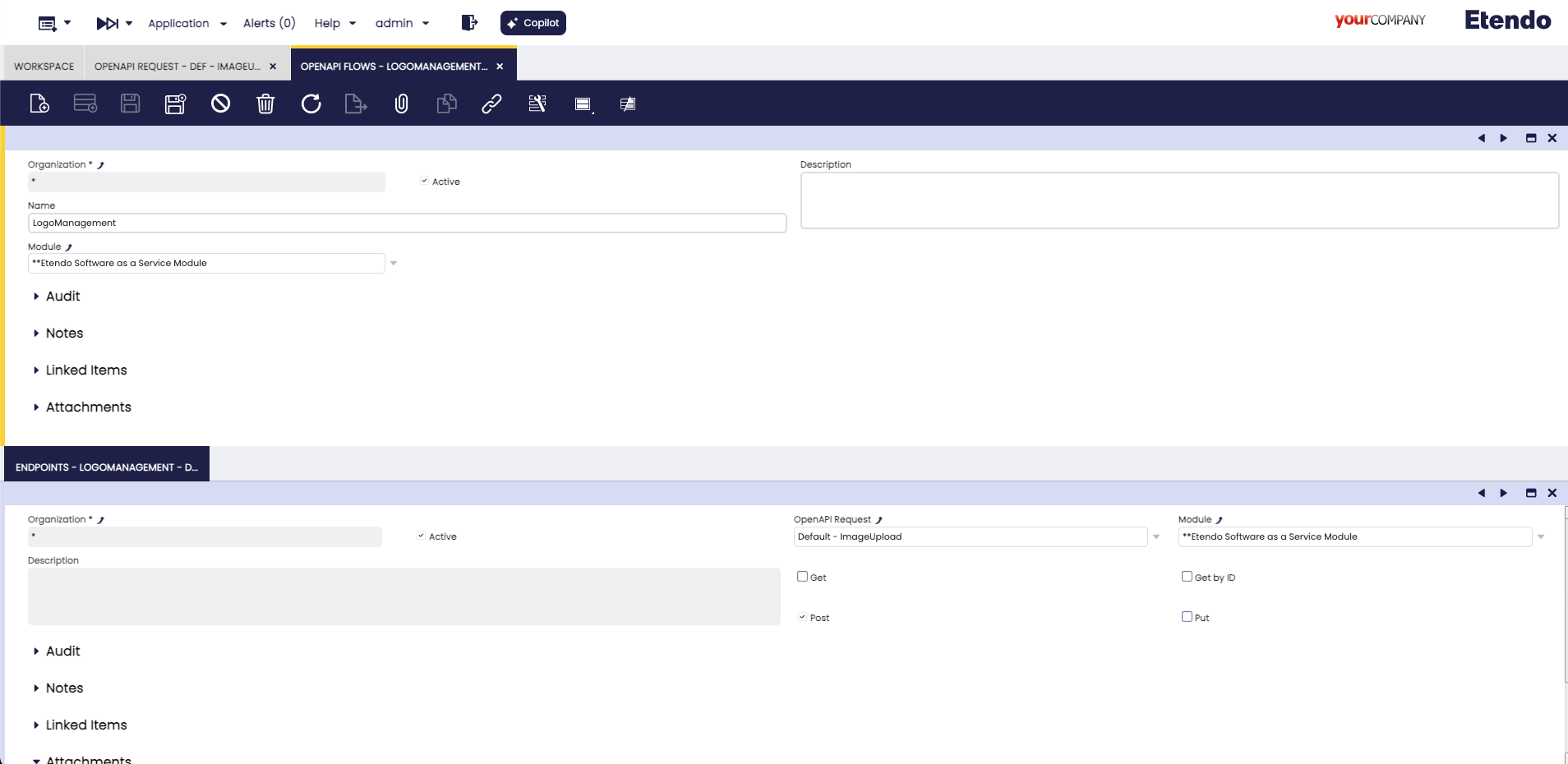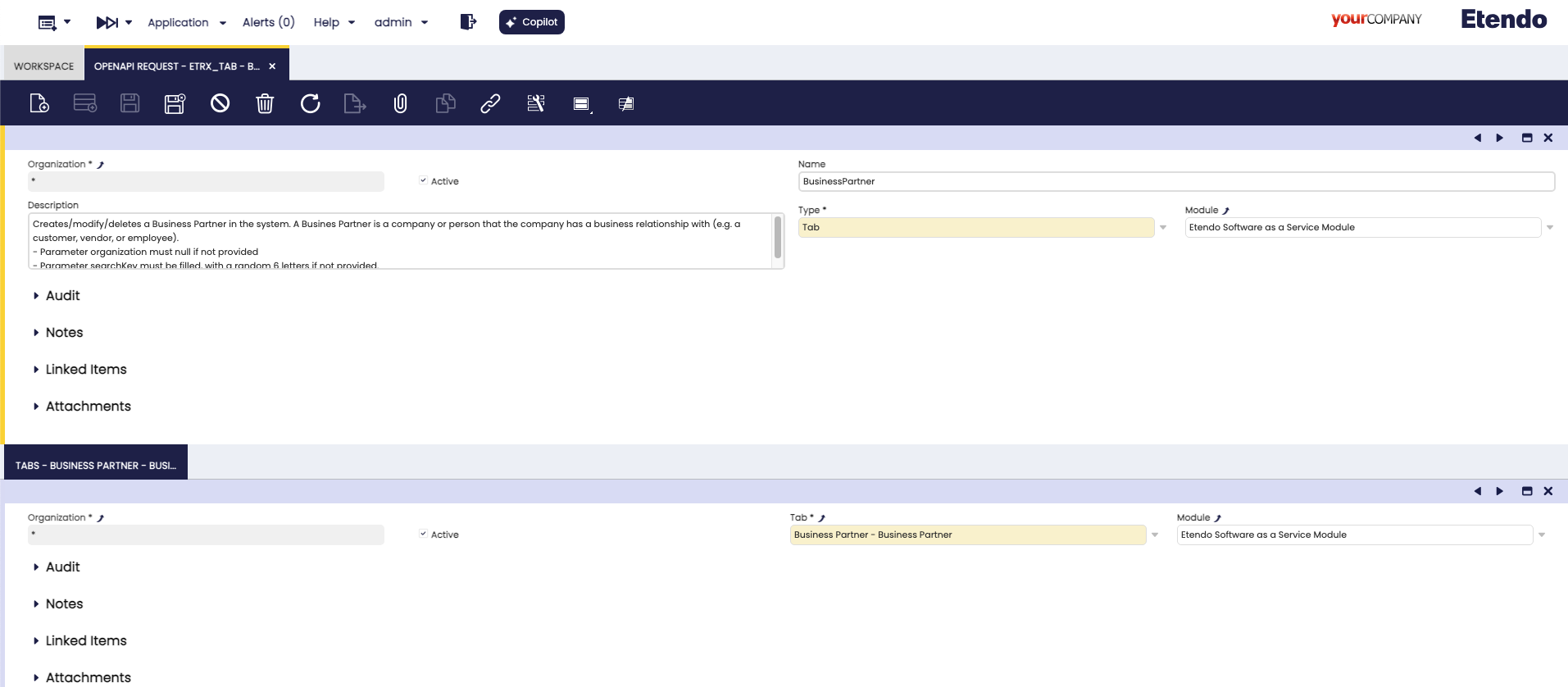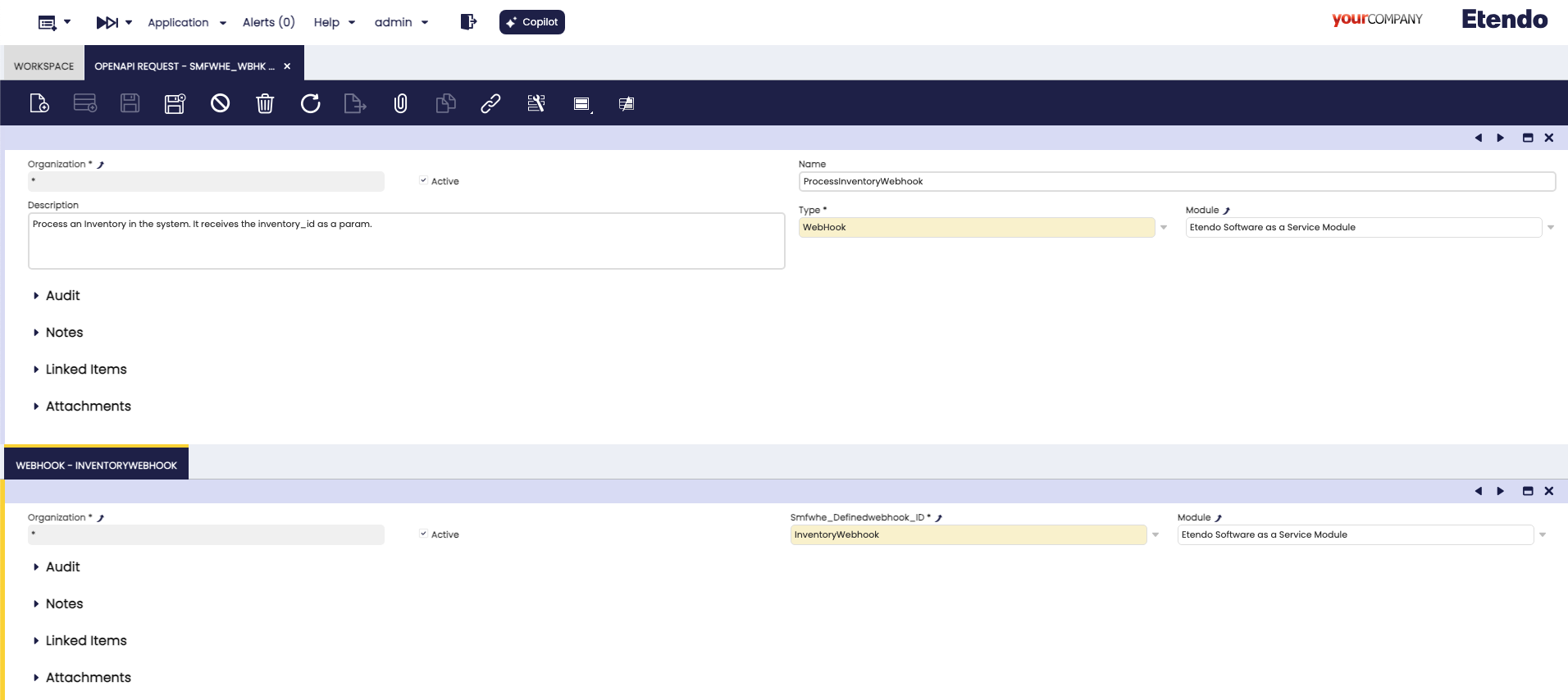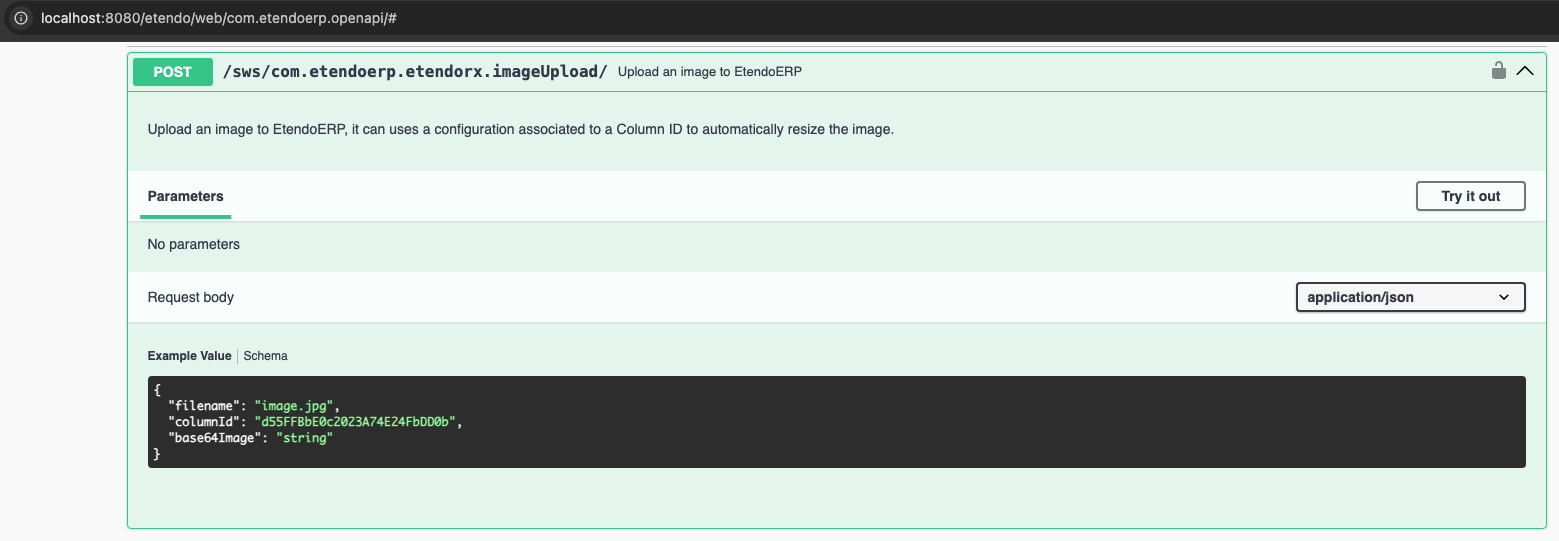How to Document an Endpoint with OpenAPI
Overview
This documentation details the steps to document API endpoints using the OpenAPI specification. By leveraging Swagger, developers can ensure their APIs are well-documented, standardized, and easy to integrate.
Info
To be able to include this functionality, the Platform Extensions Bundle must be installed. To do that, follow the instructions from the marketplace: Platform Extensions Bundle. For more information about the available versions, core compatibility and new features, visit Platform Extensions - Release notes.
Define a New OpenAPIDefaultRequest
To define a new OpenAPIDefaultRequest, you need to extend the abstract class OpenAPIDefaultRequest.
Here is an example:
package com.etendoerp.etendorx.openapi;
public class ImageUploadOpenAPI extends OpenAPIDefaultRequest {
public static final String ETENDO_ID_PATTERN = "^[0-9a-fA-F]{1,32}$";
@Override
protected Class<?>[] getClasses() {
return new Class<?>[]{ com.etendoerp.etendorx.services.ImageUploadServlet.class };
}
@Override
protected String getEndpointPath() {
return "/sws/com.etendoerp.etendorx.imageUpload/";
}
@Override
Operation getPOSTEndpoint() {
Operation endpoint = new Operation();
endpoint.setSummary("Upload an image to EtendoERP");
endpoint.setDescription("Upload an image to EtendoERP, it can use a configuration associated with a Column ID to automatically resize the image.");
Schema reqSchema = new Schema()
.addProperty("filename", new StringSchema().description("The name of the file").example("image.jpg"))
.addProperty("columnId", new StringSchema().description("The column ID where the size and resize configuration is stored").pattern(ETENDO_ID_PATTERN))
.addProperty("base64Image", new StringSchema().description("The base64 encoded image"));
reqSchema.required(List.of("filename", "base64Image"));
RequestBody requestBody = new RequestBody().content(new Content()
.addMediaType("application/json", new MediaType().schema(reqSchema)));
endpoint.requestBody(requestBody);
return endpoint;
}
}
This class specifies a POST endpoint for uploading images. It defines the endpoint path, request body schema, and required properties.
Define an OpenAPI Request & Flow
An OpenAPI Request record represents a single API endpoint in your application. OpenAPI Requests are defined in the window OpenAPI Request.
- Type: Set the type to
Default. - Description: Add the endpoint description.
- Java Class: Specify the Java class created that extends the
OpenAPIDefaultRequestclass.
An OpenAPI Flow groups related API endpoints under a single category or flow. These flows make it easier to organize and navigate the API documentation.
Each OpenAPI Flow record can:
- Define a flow name and description.
- Include one or more OpenAPI Requests through the
Endpointstab. - Specify which HTTP methods (GET, GET by ID, POST, PUT) the endpoints support using the
Endpointstab fields. When these fields are checked, they generate the corresponding endpoint methods documentation.
To ensure an OpenAPI Request appears in Swagger documentation, it must be linked to an OpenAPI Flow. This ensures logical grouping and visibility.
Additional OpenAPI Request Types
This type allows documenting existing entities or tables without defining a custom class that extends OpenAPIDefaultRequest. It enables seamless interaction with the ERP entities and supports full CRUD operations.
To configure a Tab OpenAPI Request:
-
Create a New Record in the
OpenAPI RequestWindow:- Type: Set the type to Tab.
- Description: Provide a description of the endpoint.
- Tabs: A new window tab will be visible. Add a new record and select the desired window tab from the tab selector.
-
Link the Request to an OpenAPI Flow:
- Open the
OpenAPI Flowwindow. - Add a new record.
- Link the OpenAPI Request in the child tab.
- Open the
Features:
- All fields defined in the tab will be available in the endpoint.
- Callouts, event handlers, triggers, and default values are automatically applied when adding, modifying, or deleting data.
- Endpoints are session-aware, ensuring data consistency and security.
This type allows documenting webhook events without defining a custom class that extends OpenAPIDefaultRequest. It is designed for ease of integration and adherence to standardized formats.
To configure a Webhook OpenAPI Request:
-
Create a New Record in the
OpenAPI RequestWindow:- Type: Set the type to Webhook.
- Description: Provide a description of the webhook.
- Webhook Tab: A new window tab will be visible. Add a new record and select the desired webhook from the selector.
-
Link the Request to an OpenAPI Flow:
- Open the
OpenAPI Flowwindow. - Add a new record.
- Link the OpenAPI Request in the child tab.
- Open the
Features:
- Enables clear documentation of webhook events.
- Simplifies integration by following standardized formats.
- Easily accessible in the Swagger UI.
Check Swagger
The new endpoint documentation should now be visible at the Swagger UI URL. The URL might vary depending on your deployment but typically follows the format:
http://localhost:8080/etendo/web/com.etendoerp.openapi/#/
Verify that the new endpoint appears under the defined tag and displays the correct request and response schemas.
Key Components of OpenAPI Integration
OpenAPIDefaultRequest
The OpenAPIDefaultRequest abstract class provides the base functionality for adding default API endpoints to Swagger documentation. It:
- Retrieves related tags and flows.
- Adds definitions to the OpenAPI object.
- Supports GET, POST, and PUT operations.
Example of an OpenAPI Endpoint Implementation
The ImageUploadOpenAPI class demonstrates:
- Endpoint Path:
/sws/com.etendoerp.etendorx.imageUpload/ - POST Operation: Defines required properties (
filename,base64Image) and validates input. - Java Class Association: Links to
ImageUploadServletfor handling requests.
OpenAPIEndpoint Interface
This interface ensures consistent API endpoint behavior by defining methods such as:
boolean isValid(String tag)void add(OpenAPI openAPI)
For example, the ImageUploadOpenAPI class implements these methods to validate tags and add endpoint definitions to the OpenAPI object.





